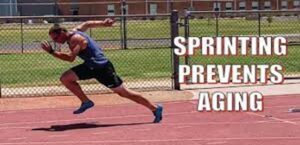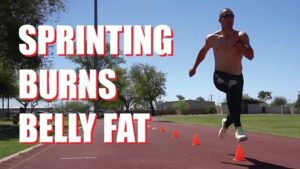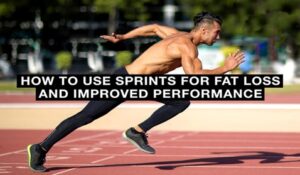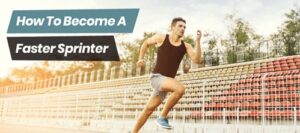Why Sprinting Is the Best Anti-Ageing Exercise

Using Sprinting as an anti-ageing exercise can help you maintain a healthy body, reduce fat and lose weight. It can also improve your mood and make you feel younger.
What Is The Running Speed That Qualifies As Sprint:
Depending on the individual, the speed of running may vary. It may be as low as 4.5 miles per hour or as high as 12.2 miles per hour. It is also dependent on the person’s experience and fitness level.
There are two main types of running: jogging and sprinting. The former is the slowest of the two and the former is the fastest. The most common definition of jogging is to run at a slow pace, while the latter is to run at a fast rate. Both are exercises related, but the former has the advantage of being able to be done in short bursts, while the latter can only be done in a continuous fashion.

The best form of sprinting is to perform a series of short, high-speed sprints. The best performers can achieve an average of 40 kilometres per hour, or about 25 miles per hour. This is not as fast as running at a normal pace, but it is still very impressive. It is also very difficult to master, as the body has to be prepared to deal with the speed bumps that are part of every jogger’s life.
Sprinting is not limited to a certain time and place, although it’s a popular exercise in many countries. In fact, it’s the most popular sport in the world and has been featured in the Olympics since the 7th century. In the early twentieth century, it was a men’s only sport. The modern era paved the way for women to compete on the same track as men.
Sprinting Boosts Metabolism:
Amongst the many benefits of sprinting, it can boost metabolism, increase your muscle mass, and burn fat. Besides that, it can also improve blood cholesterol levels and help control high blood pressure. It can also protect your balance and help ward off osteoporosis. When sprinting, your body burns calories to recover from exercise and build muscles. This is called the after-burn effect, or EPOC. The amount of calories you burn is dependent on your pace and weight.

Studies have found that athletes who perform speed workouts tend to have a lower body fat percentage than those who do slow-paced running. They also tend to have better bone density, which helps reduce the risk of coronary artery disease.
While sprinting does not burn as many calories as long-duration physical activity, it does produce feel-good endorphins that can boost your confidence and relieve stress. It can also increase lung power, which can be a major factor in improving cardiovascular health.
A recent study published in Osteoporosis International revealed that older sprinters have higher bone density than their younger counterparts. It also showed that sprinting increases lean muscle mass. It is a good idea to use high-intensity interval training in your sprint workouts, as this is known to jump-start your metabolic functioning. In addition, high-intensity workouts are much more time efficient than steady-state cardio.
Sprinting Makes Muscle:
Using a sprinting routine is an effective anti-ageing exercise. This type of exercise can increase muscle mass and build muscle. It also burns fat. This can help reduce the risk of heart disease and osteoporosis. It is considered a low-impact exercise and doesn’t require any special equipment. It also increases a runner’s overall endurance. Besides improving cardiovascular health, sprinting may help to control high blood pressure. It may also lower cholesterol levels.
It has been shown that aging is accompanied by loss of fast-twitch muscle fibers. These fibers are responsible for power generation. However, the selective atrophy of these fibres can be reversed by resistive training.

In a sprint, the leg muscles work twice as fast as they do during a traditional jog. This forces the skeleton to become stronger. It also tones the upper body muscles.
The speed at which a runner can perform a sprint depends on many factors, including genetics and external conditions. A person can only sustain a sprint for 30 seconds. This means that if you want to improve your speed, you should do repetitions at the highest intensity you can handle.
It is also important to note that sprinting is an anaerobic exercise. This means that the body needs to burn more calories during the workout and after the workout to recover. This makes sprinting an excellent way to burn fat.
Sprinting Improves Mental And Emotional Health:
Besides improving heart and skeletal health, sprinting also has a positive effect on mental and emotional well-being. According to researchers, the body responds to exercise with the release of serotonin and dopamine, which are known to ease stress. In addition, exercise triggers the release of endorphins, which provide an athlete with relief and optimism.

Another benefit of sprinting is its ability to reduce insulin resistance, a condition that can develop into type 2 diabetes. This is because westerners have less sensitivity to insulin, which shuttles sugar into the cells. When the cells become resistant, they build up a dangerous amount of glucose in the blood.
In a study on young adults, aerobic exercise was found to improve their mental well- being. However, the exact reason for the improvement is unknown. Aside from self- efficacy, possible causes include unclear neurobiological mechanisms and hormonal responses.
The same study found that moderate-intensity running increases blood flow to the prefrontal cortex, a part of the brain responsible for executive functions. The prefrontal cortex is involved in regulating mood.
While there is no direct correlation between physical activity and the release of serotonin or dopamine, the effects of both are often referred to as the “runner’s high.” Studies show that regular exercise is associated with lower rates of depression.
Sprinting Is Good For Fat And Weight Loss
Whether you are looking to lose weight or simply increase your muscle mass, sprinting is a great way to get fit. It has many benefits and can also help boost your confidence. It can accelerate fat loss.

Sprinting boosts your metabolism and helps you burn calories after your workout. It is an anaerobic exercise, which means it is an intense form of working out. Sprinting is also a good way to increase bone density. This is because it uses your fast-twitch fibers, which improves your muscle strength. In addition, sprinting increases the production of human growth hormone, which is an anti-aging aid. Another benefit of sprinting is its ability to reduce blood pressure. It also improves heart function. When your heart pumps harder, it increases blood circulation. This is important because it makes it more likely you will not get cardiovascular disease.
It is important to know how to do a proper sprinting workout. You should always start with a warm-up. This should include some light jogging, speed walking, and dynamic stretches. This will prepare your body for the intense intensity of sprinting.
If you are a beginner, you should give yourself time to adapt. You should also allow your body some time to rest after your workout. Depending on your level of fitness, you should plan on a recovery period of 60 to 120 seconds.
Sprinting Boosts Mitochondria And Hormones
Among the most effective anti-aging exercises is sprinting. The reason is that sprinting boosts mitochondria and hormones. It also helps to reduce body fat. It is important to incorporate sprinting into your life to maximize its benefits.
Sprinting works to increase the production of human growth hormone, which is the fountain of youth. This hormone helps the body to develop efficient musculature, improve cognition, and enhance overall health.

During a sprint, a muscle is able to produce more ATP than it can use, thus improving the ability to replenish its phosphocreatine store. More ATP means more energy. Sprinting also stimulates a growth hormone that promotes lean muscle development. This hormone is known as dihydrotestosterone. Increasing levels of this hormone are found in young men. It increases muscle strength, improves lean muscle mass, and decreases the number of fat cells.
Another hormone called MOTS-c, which is encoded in the mitochondria, plays a role in stress responses. It instructs proteins to interact with the nuclear genome. This gene is also involved in the process of mitochondrial biogenesis.
Research shows that a proper sprint workout can help to reduce the amount of fat in the body by up to 75%. However, this type of workout should be done in a controlled fashion. In addition, sprinting should be followed by an extended recovery period. This is because sprinting is a high-stress activity.
Sprinting Erases Age And Restores Youth
During a sprint workout, the body releases growth hormones. This release promotes efficient musculature and helps to restore youth. This activity also increases circulation and improves heart health. It improves muscle strength, balance, coordination, and bone density. In addition to increasing your strength, it also optimizes your endurance

There are two types of exercise: aerobic and resistance. Both are beneficial, but aerobic exercise is more effective at restoring youth. It’s best to start exercising at an early age, because it will help to build muscle and increase bone density. It’s also important to perform the activity against natural gravity, which forces the body to perform against its own weight. This can be dangerous, however, because it can strain the bones and muscles.
Another anti-aging activity squats. Squats strengthen your core and improve bone density. It works the entire body, including the midsection and lats. The calf raise is a great way to develop muscle mass, and it will also boost the size of your calves. Squats will also improve coordination and balance. It’s a good way to start a sprint workout, as it helps to combine both muscle and cardio training.

While it’s easy to find products that will make you look younger, the only way to truly reverse aging is to do some type of sustained exercise. The earlier you begin, the more likely you will be able to replicate the younger you.
 Dr. K.Jayanth Murali is an IPS Officer belonging to 1991 batch. He is borne on Tamil Nadu cadre. He lives with his family in Chennai, India. He is currently serving the Government of Tamil Nadu as Director General of Police, Idol Wing CID, Chennai.
Dr. K.Jayanth Murali is an IPS Officer belonging to 1991 batch. He is borne on Tamil Nadu cadre. He lives with his family in Chennai, India. He is currently serving the Government of Tamil Nadu as Director General of Police, Idol Wing CID, Chennai.
